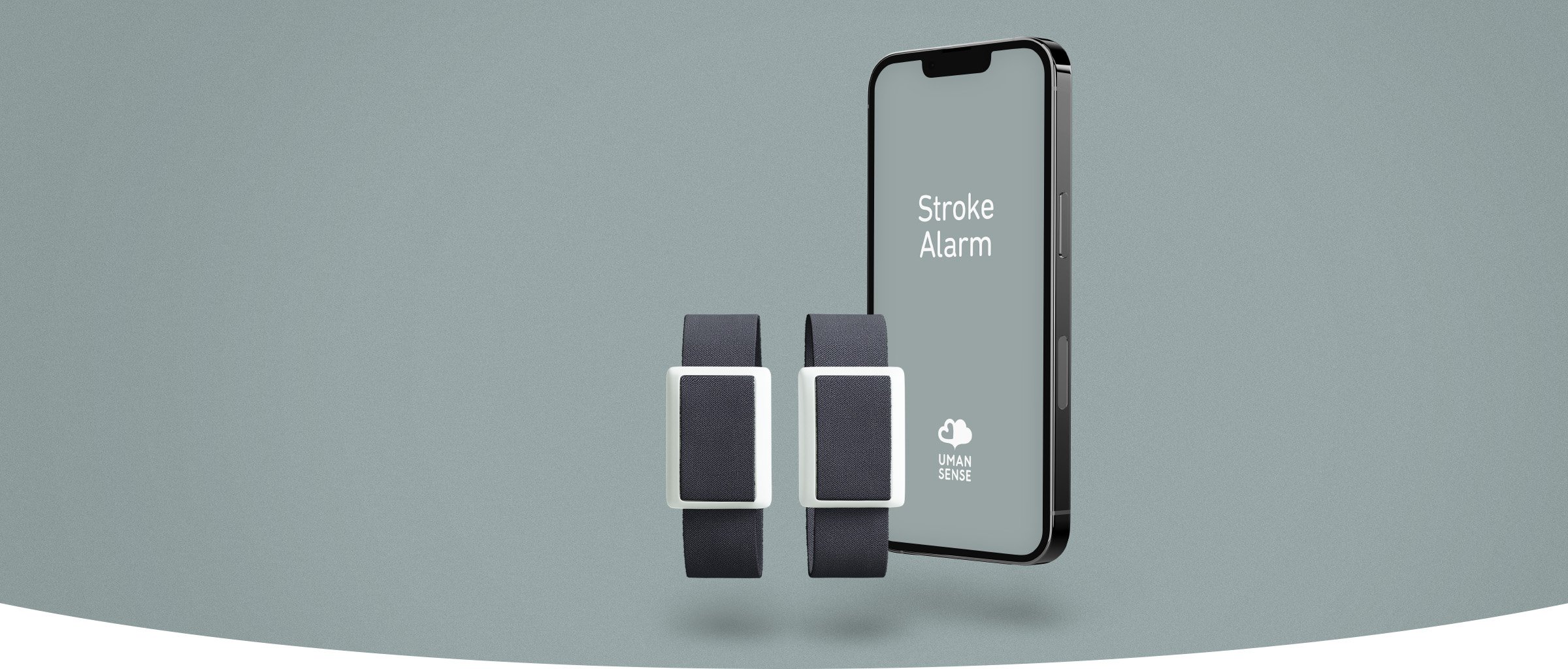
Why use Stroke Alarm?
On average, 2 million brain cells are lost every minute during a stroke. [1] People who suffer a stroke can be cured if they receive the right treatment in time. Unfortunately, most people arrive too late — only one out of three stroke patients arrive in time for effective treatment. [2]
Stroke patients are often unable to call for help themselves. The intervention of other people is therefore crucial. But it is not possible to constantly watch over someone.
When every minute counts
Stroke Alarm’s purpose is to increase the chances for those who suffer a stroke to get help early. In case of a suspected stroke, pre-selected contacts are notified via SMS. This gives them the opportunity to help the user within time to get effective stroke treatment.
How Stroke Alarm works

1. VIGILANT AROUND THE CLOCK
2. REACTS TO SYMPTOMS
3. NOTIFIES SELECTED CONTACTS
Vigilant around the clock
Stroke Alarm consists of two bracelets with motion sensors connected to a mobile app in the user’s phone. The system is worn around the clock and follows the user in everyday life — everything from the morning coffee to the walk in the woods and dinner with friends. Even when the user is sleeping, Stroke Alarm is awake.
Reacts to symptoms
Stroke Alarm is trained to recognize the unilateral arm weakness that characterizes most stroke patients. Normal everyday activities may mimic the movement pattern of a stroke. A simple predefined hand gesture is usually enough to tell the system that the user is okay. Otherwise, the user is asked to perform a test on the phone.
Notifies selected contacts
If the user’s activity is indicative of arm paralysis, which is a common symptom of stroke, SMS-messages are sent to selected contacts who can help the user get medical care in time. These alarm-recipients are selected by the user at onboarding – typically people they know well such as family, friends, or neighbors.

When every minute counts
We are looking for partners worldwide
Are you active in life sciences and passionate about delivering valuable products to patients? If so, you could be our next partner. Together, we can make a difference in stroke treatment!
Swedish innovation based on research
With the help of machine learning and neural networks, we have developed an algorithm to distinguish stroke-affected arms from healthy ones even during everyday activities. This is the core functionality for Stroke Alarm. The method is described in a recently published study from Lund University. [3]
Stroke Alarm is developed to follow the user in all aspects of everyday life — day and night. A user study showed that the majority had a positive experience with Stroke Alarm and that most would use a similar product again. [4]
Human and health economic benefits
Stroke is the disease that causes the most hospital care days and costs the Swedish society more than SEK 18 billion every year. [5] Early treatment with thrombolysis and thrombectomy improves the chance of surviving and being able to return to an independent life. [6] For society, this means reduced need for hospitalization, rehabilitation, in home care or residential care. This makes stroke treatment highly cost-effective. [7]
Our analysis shows that early detection of stroke with the help of Stroke Alarm is cost-effective by enabling more patients to benefit from the effective treatment. [8]









